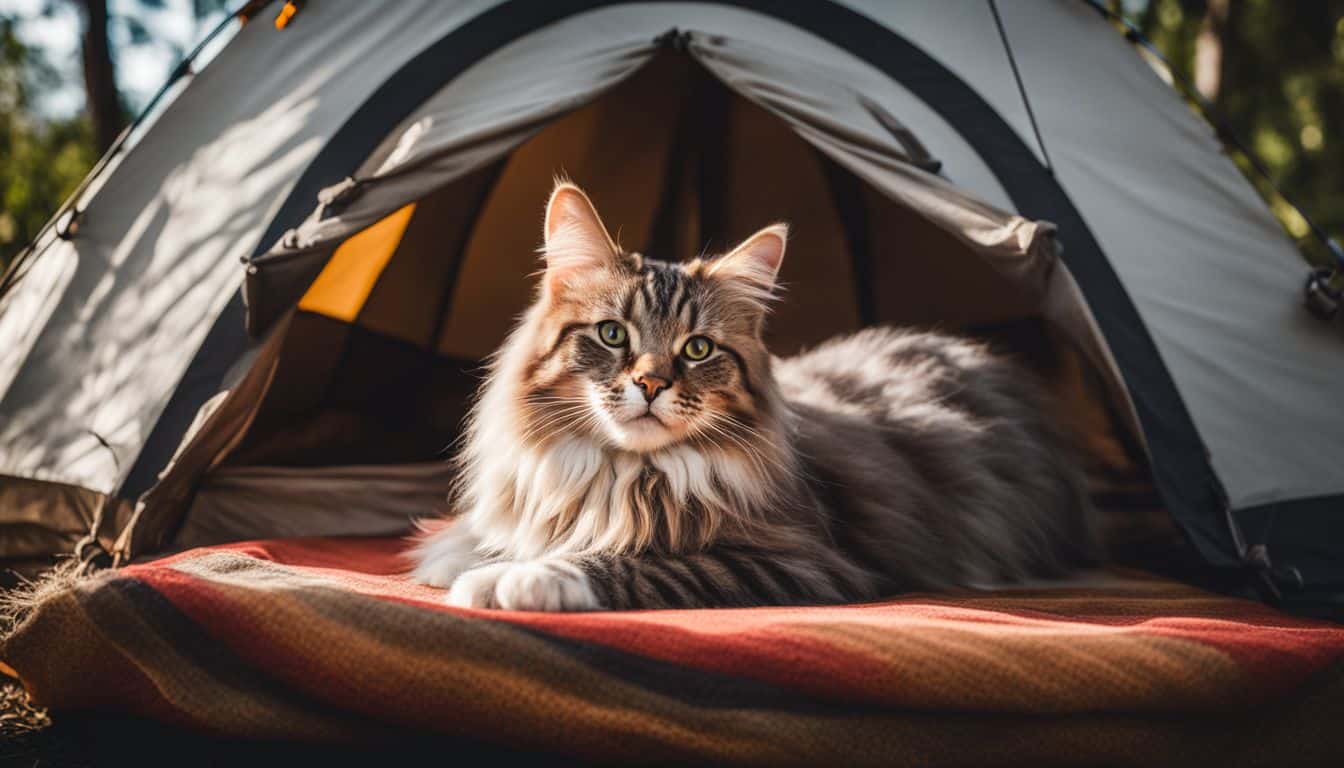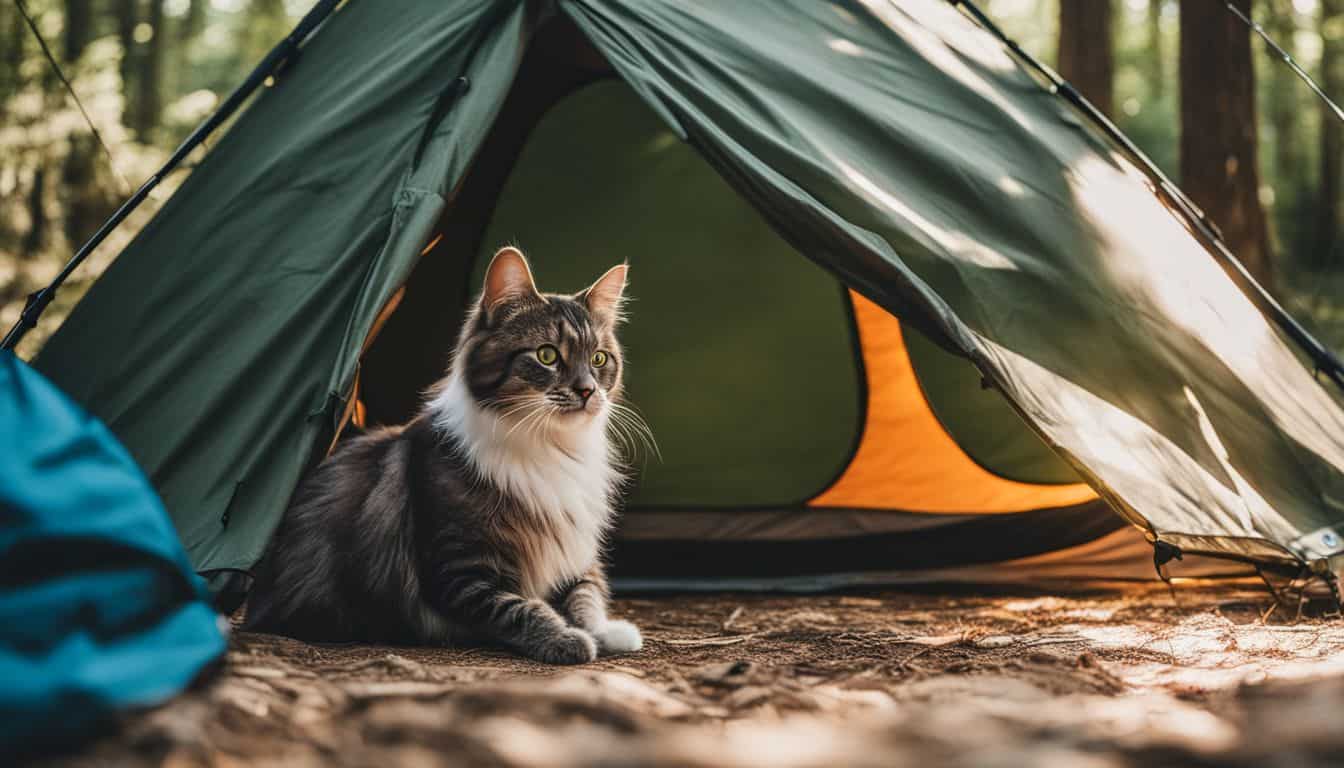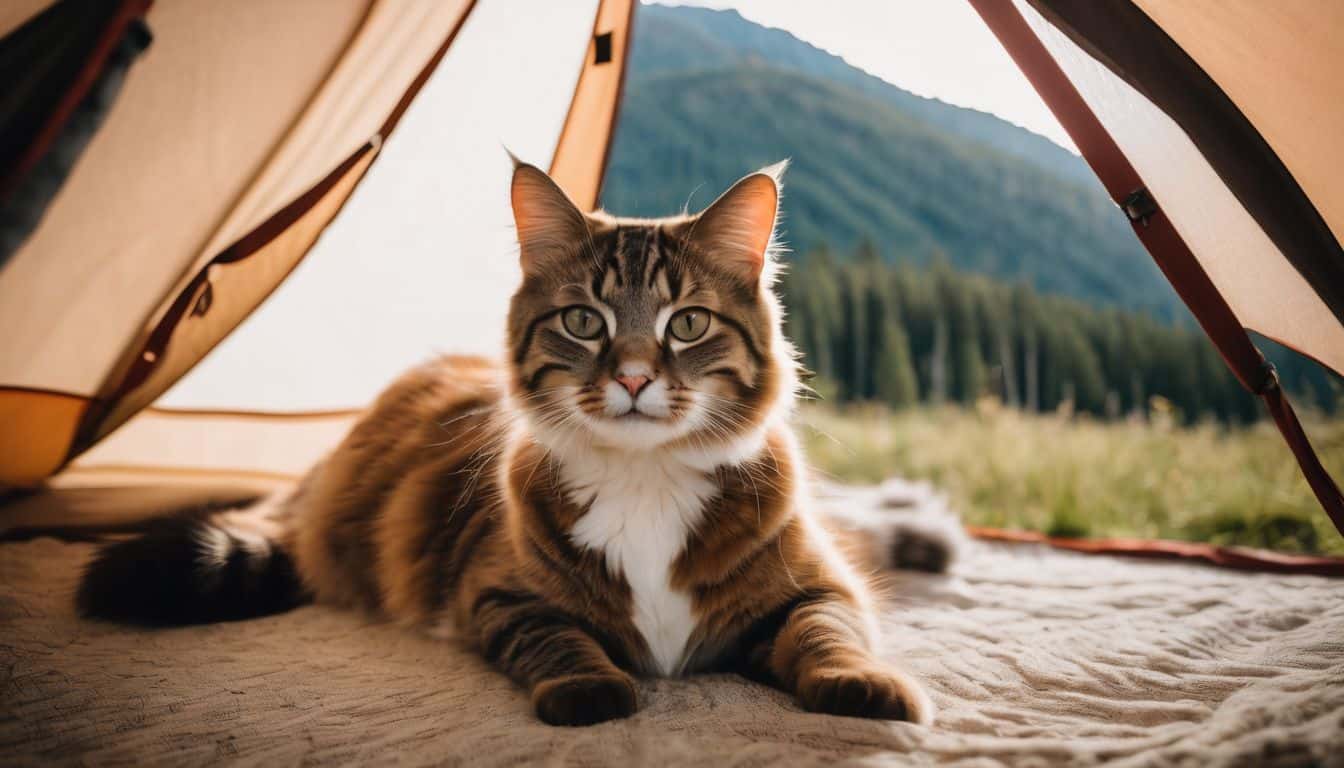Introducing your feline friend to tent camping requires patience, preparation, and a gradual approach. This guide will help you train your cat for tent life, ensuring a safe and enjoyable outdoor experience for both of you.
Start with Indoor Acclimation
Begin by setting up your tent in your home or backyard. Place familiar items like your cat’s bedding and favorite toys inside to create a welcoming environment. Allow your cat to explore the tent at their own pace, rewarding their curiosity with treats and praise. This initial step helps your cat associate the tent with positive experiences and reduces anxiety about the new space.

Introduce Camping Gear
Familiarize your cat with other camping equipment, such as sleeping bags and backpacks. Let them investigate and scent-mark these items, which helps them feel more comfortable around the gear. Create positive associations by offering treats near the equipment and encouraging your cat to view these items as part of their territory.
Harness and Leash Training
Start with short indoor sessions, allowing your cat to wear the harness for brief periods. Gradually increase the duration and move to outdoor spaces as your cat becomes more comfortable. Practice leash walking in safe, enclosed areas to build confidence. This step is crucial for keeping your cat safe outdoors during camping trips.
Simulate Camping Sounds
Play recordings of nature sounds like birds chirping or wind rustling through trees at low volumes. Slowly increase the volume as your cat becomes accustomed to these noises. This preparation helps prevent your cat from being startled by unfamiliar sounds at the campsite.
Practice Car Travel
Take short car rides to acclimate your cat to vehicle motion. Use a secure carrier or harness during travel to ensure safety. Gradually increase the duration of these trips to prepare for longer journeys to campsites. Consider using cat carriers designed for camping to make the experience more comfortable for your feline friend.
Outdoor Exposure
Begin with short “camping” sessions in your backyard. Supervise closely and keep these experiences positive. Gradually increase the time spent outdoors, allowing your cat to become more comfortable with the sights, sounds, and smells of nature.
Nighttime Adaptation
Have your cat sleep in the tent indoors first, then move to the backyard overnight before attempting actual camping trips. This gradual approach helps your cat adjust to sleeping in the tent environment.
Establish a Routine
Maintain feeding and play schedules similar to those at home. Create a designated “safe space” within the tent where your cat can retreat if feeling overwhelmed. Consistency helps reduce stress and provides a sense of normalcy in the new environment.
Safety Precautions
Ensure your cat is microchipped and wearing ID tags with current contact information. Practice recall training for emergencies, and bring a first-aid kit suitable for cats. Familiarize yourself with potential hazards at your camping location and take appropriate precautions.
Start Small
Begin with short, nearby camping trips before attempting longer adventures. This allows both you and your cat to adjust to the experience and identify any potential issues in a controlled setting.
Provide Enrichment
Bring familiar toys and scratching posts to the campsite. Create opportunities for safe exploration, which can help keep your cat entertained while camping. Engaging in activities can help reduce stress and make the camping experience more enjoyable for your cat.
Monitor Stress Levels
Watch for signs of anxiety or discomfort in your cat, such as excessive meowing, hiding, or refusal to eat. Be prepared to cut trips short if your cat shows persistent signs of stress. Remember, the goal is to create a positive experience for both you and your feline companion.
Remember, not all cats will enjoy camping. Respect your cat’s personality and comfort level throughout the training process. With patience and consistent positive reinforcement, many cats can learn to enjoy tent life and outdoor adventures. However, always prioritize your cat’s well-being and be willing to adjust your plans if necessary.

Conclusion
By following these steps and remaining attentive to your cat’s needs, you can create a safe and enjoyable camping experience for your feline friend.
FAQ
How long does it take to train a cat for tent camping?
The training duration varies for each cat, but it’s a gradual process that requires patience. Start with indoor acclimation and progress through stages like harness training, car travel, and overnight stays at your own pace. Success depends on your cat’s personality and comfort level.
What essential gear do I need for camping with my cat?
You’ll need a sturdy tent, cat harness and leash, secure carrier, familiar bedding, toys, scratching posts, and a pet first-aid kit. Your cat should also wear ID tags and be microchipped for safety.
Should I bring my cat’s litter box when camping?
Yes, maintaining familiar routines is crucial for reducing stress. Set up a designated area in or near the tent for your cat’s litter box, similar to their home arrangement.
How can I prevent my cat from running away at the campsite?
Always supervise your cat and use a proper harness and leash during outdoor time. Practice recall training beforehand and create a secure “safe space” within the tent where your cat can retreat.
What signs indicate my cat is stressed during camping?
Watch for excessive meowing, hiding, refusing to eat, or unusual behavioral changes. If these signs persist, you may need to cut the trip short and return home.
Can I take my cat camping in any weather?
Consider your cat’s comfort and safety first. Avoid extreme weather conditions and ensure the tent provides adequate protection from elements. Start with mild weather conditions for the best experience.
How do I prepare my cat for camping sounds?
Start by playing nature sounds at low volumes indoors and gradually increase the volume. This helps your cat adjust to typical camping noises like wind, birds, and other outdoor sounds.
What if my cat doesn’t like tent camping?
Not all cats will enjoy camping. Respect your cat’s preferences and be prepared to modify or abandon camping plans if your cat shows consistent signs of distress or discomfort.
How can I make the tent feel more comfortable for my cat?
Place familiar items like bedding and toys inside the tent, maintain regular feeding schedules, and create a designated safe space. This helps create a sense of territory and security for your cat.
Should I feed my cat differently while camping?
Maintain your cat’s regular feeding schedule and diet to provide consistency and reduce stress. Bring enough of their usual food and fresh water for the entire trip.

Leave a Reply